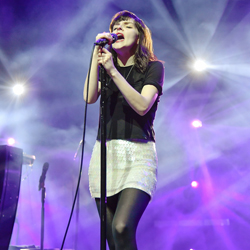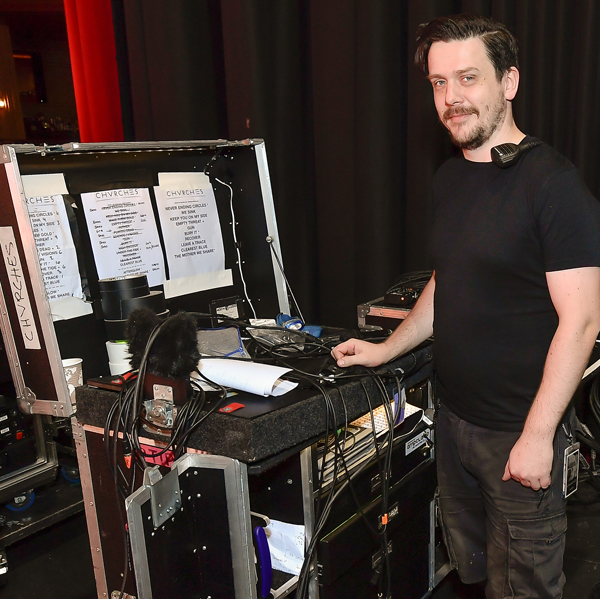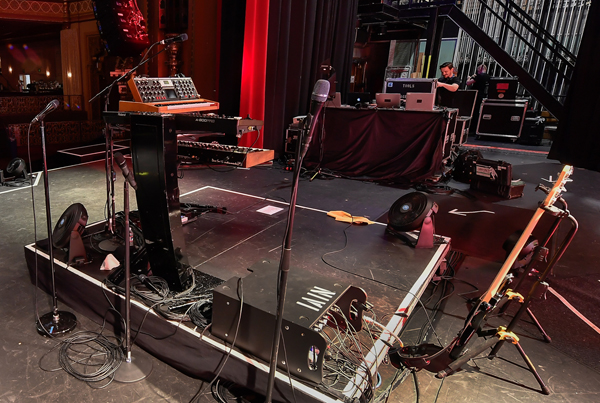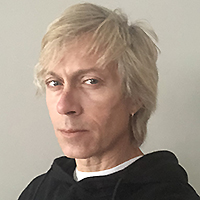For a three-piece band, Chvrches (pronounced as “churches”) makes a lot of noise.
Rather than depend primarily on playback to present its heavily layered synthpop-style music, the Glasgow, Scotland-based band – Lauren Mayberry (lead vocals, synthesizers, samplers), Iain Cook (synths, guitar, bass, vocals) and Martin Doherty (synths, samplers, vocals) – focuses on generating as much of it live as possible.
In fact, both on stage and in studio, Chvrches is all about that “live” feel, which loosely defined is the rough edges that make for signature performances.
“That’s important to all of them,” notes Gareth Russell, the band’s stage manager and backline tech, “and it’s a very smart system they’ve come up with.”
Hiring instruments and a stage monitoring system wasn’t an option on the recent tour of North America, he explains, because everything is so specialized. Take the monitor rig, for example, a compact, integrated affair that relies on computers and a Behringer X32 rack-mount digital mixer. It’s at the heart of an audio approach that’s self-contained.
“We carry a front of house console, have everything down to the media server, and are covered for audio and backline,” he says. “For fly gigs, we hire risers, lighting and video, but all we need (on stage) is real estate and power, which is great for festivals.”
Subtle Refinements
Russell, who worked Chvrches’ first live shows in 2012, has teamed up with Ableton/MIDI/playback tech David Simpson to tweak the live sound approach since becoming involved again in 2016. Now that effort is about subtle refinements, he says, making set-up and tear-down faster, and the entire rig more streamlined and orderly.
Simpson is relatively new to touring, having previously worked as a composer/musician/producer in Glasgow on scores for film and television in the UK. (He also shared a studio with band member Cook.) “I didn’t realize how unusual the monitoring system was until we start playing festivals,” Simpson says. “It’s plug and play as far as possible and it’s about comfort and consistency for the musicians. Nobody in the band is particularly demanding about monitor mixes. For them it’s more important that they get what they expect without me getting too involved in it.”
Generally speaking, he adds, his approach is to provide spare mixes with very little processing, raw and unforgiving, but at the same time serving as a good way for the band to judge their performances and up their games, musically speaking. Originally, all of the monitoring went through Abelton Live software, but it put a huge load on the computers and created issues with latency. “One of the first things I addressed was to take a lot of that out of Abelton and use the X32,” he explains, adding, “It’s still very much a hybrid system. We do a lot of sub-mixing in Abelton because the system has evolved from what the band members set up themselves.”
There’s not much tweaking during shows on monitor mixes. Simpson’s mixing platform is a MacBook Pro, which is used to change scenes between songs, but most mixing is simply done with the X32’s editing software.
Here To There
While synthpop in style, the music of Chvrches also invokes indietronica, indie pop and electronic dance. Making it all work for the musicians and techs is a combination of instruments, audio gear, and an involved signal flow to get things where they need to be.
At stage right, Cook’s synths – a DSI Prophet 8, Moog Voyager and Roland Juno 106 – feed a Radial 8-channel direct box (DI) and then into the band’s playback racks. From there the signal flows through Focusrite OctoPre MK II pre-amps linked an RME M-32 A/D converter. Signal then splits into an RME Madiface XT interface, is processed and sub-mixed through Abelton, and then comes out as part of a set of audio outputs, via two RME Madiface XTs, into a Direct Out Exbox switcher.
“That’s our standard point of redundancy,” Simpson says. “Everything is duplicated by an A and B system plugged into the two Madiface XTs. From the Exbox that feeds the RME M-32 D/A converter, which we use as a split with a set of tails – 15 channels to front of house on D-Sub to XLR. Also from the D/A, there’s another MADI output that goes to the X32 rack. From there we connect to Sennheiser EW300 stereo transmitters on XLR which distributes the mixes to the band’s in-ear monitors.” (All players are on JH Audio JH16 IEMs.)
Cook also uses a Mike Hill A/B mute box to switch between bass and guitar, which connects to a Fractal Audio Axe FX unit on stage right, which then outputs to a Klark Teknik Square One splitter to FOH and the X32. At stage left, in Doherty’s world, his DSI Prophet 12’s output follows a similar path: into a Radial 8-channel DI that runs along D-Sub to an OctoPre, through Abelton, and then out to the X32 and FOH.


















